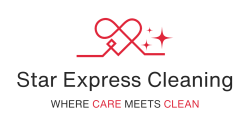…Cleaning must be undertaken at least once per day. Cleaning should be more frequent if surfaces become visibly dirty, there is a spill, or if they are touched by a different people (for example, if your workplace has a high volume of workers, customers or visitors that are likely to touch surfaces such as EFTPOS machines, lift buttons and door handles)

How often should I clean?
Regular cleaning is key to minimising the build-up of dust and dirt and allows for effective disinfecting when required.
Cleaning must be undertaken at least once per day. Cleaning should be more frequent if surfaces become visibly dirty, there is a spill, or if they are touched by a different people (for example, if your workplace has a high volume of workers, customers or visitors that are likely to touch surfaces such as EFTPOS machines, lift buttons and door handles). If your workplace operates in shifts, it should be cleaned between shifts. If equipment is shared between workers, it may also be cleaned between uses, where practicable.
For more information, refer to our cleaning guide.
What if there is a case of COVID-19 in my workplace?
If you have a case of COVID-19 in the workplace, your state or territory health authority should provide you with advice on what you need to do in your workplace. Follow their instructions.
Your workplace will need to be thoroughly cleaned and disinfected before people can return to the workplace.
- Using an ISO accredited cleaner is not required.
- Fogging is not required and is not recommended by the Australian Government Department of Health for routine cleaning against COVID-19
- Swabbing surfaces following disinfection is not required.
For more information on what to do if there is a case of COVID-19 see our infographic What to do if a worker has COVID-19.
How often should I disinfect?
You should regularly clean and disinfect surfaces that many people touch. You should consider disinfecting frequently touched surfaces at least once daily.
All surfaces should be cleaned with detergent prior to disinfection. Alternatively, you may be able to do a 2-in-1 clean and disinfection by using a combined detergent and disinfectant.
Does every surface need to be cleaned?
You don’t need to clean every surface. The virus is transmitted by breathing in droplets produced by an infected person coughing or sneezing, or contact with contaminated surfaces, so you only need to clean surfaces that are touched. This is true whether the touching is deliberate (e.g. a door knob) or incidental (e.g. brushing a door when reaching for the door knob). There are some surfaces that are never touched (e.g. ceilings and cracks and crevices in machinery) and these do not need to be cleaned and disinfected.
Do I need to clean areas or equipment daily if no one has entered the area or used the equipment recently?
Research suggests that the virus can survive on soft, porous surfaces (such as cardboard and fabrics) for up to 24 hours and hard surfaces such as plastic and stainless steel for up to 72 hours (three days). Any areas which have not had recent human contact, that is within the last few days, are unlikely to be a potential source of infection. You should consider this when deciding whether an area or equipment needs to be cleaned and disinfected.
What about workers’ personal items?
You should instruct your workers to clean personal items used in the workplace such as glasses and phones regularly using disinfectant wipes.
